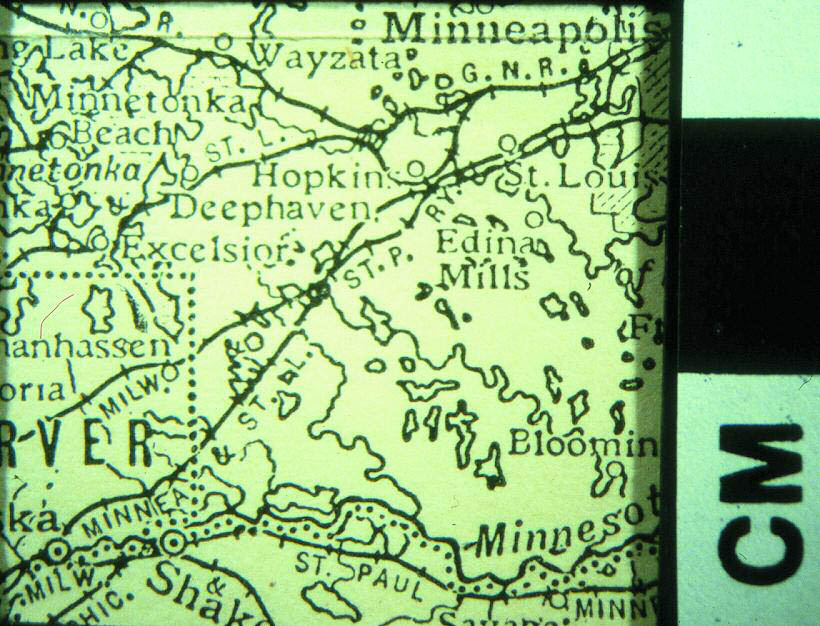A HISTORICAL MAP-PRINTING TECHNIQUE: WAX ENGRAVINGNANCY PURINTON
1 INTRODUCTIONAs a general rule in the European map tradition, it takes at least two people to complete the steps essential to print a map—the cartographer and the printer. The cartographer collects the information for the map and creates the map drawing, or worksheet, and the printer turns that information into a printed image (Robinson 1975). Over the past five centuries printers had basically three ways of printing: relief, intaglio, and planographic. Cartographic historian Arthur Robinson (1975) has summarized the sequence: relief printing (in the form of the woodcut) was used to make the first printed maps, copperplate engraving dominated map printing during the 16th–18th centuries, and lithography dominated printing after its invention around 1798. However, at one time, around 1900, wax engraving was used to print a significant portion of all published maps in the United States. Although wax engraving is now an obscure process, it was an important American map-printing technique from the mid-19th to the mid-20th century and influenced the style of popular American maps. David Woodward, cartographic historian and editor of the multivolume History of Cartography (Woodward 1987–present), describes wax engraving as beginning in the 1830s with the new technology of electro-chemical deposition and still used commercially as late as the 1960s (Woodward 1977). Though the majority of maps printed using this technique were in atlases and geography books, large maps were also printed using wax engraving. Terms other than wax engraving have been used to refer to the technique. In 1839 Sidney E. Morse (1794–1871), who patented the process in the United States, announced, “As the inventor of a new art, we shall be allowed, we suppose, the privilege of giving it a name. We accordingly name it, Cerography” (quoted in Woodward 1977, 18). Cerography was also sometimes spelled “kerography.” Morse printed relatively large maps using this technique. One now in the Library of Congress collection (G3700 1847. B In England, Edward Palmer, who patented the process there just two years after Morse did in America, called the process glyphography. He wrote that the term was derived from two Greek words, one for “engrave” and the other meaning to “draw.” Other terms for this process were electrotint, galvanoglyphy, typographic etching, and stylography. Some authors called it relief line or wax line (Inland Printer 1922). In 1841 a description of galvanism by Savage gave a detailed explanation of the electrotype copying process and an electrolytic molding process. He claimed that this “discovery is as yet in its infancy … and the ingenuity of man is at work to extend and improve the discovery” (Savage [1841] 1966, 257). Palmer's conceptual combination of engraving and drawing is important because he originally conceived the process as a technique for artists. It was supposed to offer great freedom to the person who was making a drawing on a plate. In a privately published pamphlet, he wrote that in glyphography drawing and engraving were combined into one operation, and he believed that this technique had advantages over etching and copperplate engraving because it made it easier to draw in a variety of styles—from sketchy and free to finished and formal (Palmer 1843). This flexibility was owing to the fact that the image drawn on the plate was not reversed. In other printing techniques (woodcut, copper engraving, etching, and lithography) the lines on the printing plate are the reverse (left to right) of the intended image. With wax engraving, the drawn image was the same as the printed one, and the image could be drawn with little effort into the soft wax covering a copperplate. Palmer's contemporaries judged glyphography against wood engraving and found it lacking. The same features Palmer thought were its strengths—delicacy and freedom of line— were considered its weaknesses by British critics (Harris 1968). The technique was used in Europe for line-drawn illustrations (Woodward 1977). Few famous fine artists used this technique, but an English artist, George Cruikshank (1792–1878), did use wax engraving for a series of prints. Cruikshank had had a successful career doing book illustrations for writers such as Henry Fielding and Oliver Goldsmith when at age 55 he turned against alcohol and totally abstained. His series titled “The Bottle,” which he envisioned as a Hogarthian moral series against drinking, was a turning point in his career. One of his biographers said the entire series of eight prints was sold for only a shilling and, because the series was so inexpensive, Cruikshank reached a wider audience than he ever did before or after this series (Kubiak 1978). The series was inexpensive because it was done using wax engraving. Perhaps most artists agreed with the printing historian Hackleman, who claimed that wax engraving was “impracticable in pictorial or portrait illustration” (Hackleman 1921, 376). The waxed plates for executing drawings were inexpensive, but if artists required complete technical control and wanted other equipment, like the electrodepositing tank, the process may well have been beyond the means of most artists. In commercial art, the technique was typically used for drawings that required linear detail (fig. 1, see page 443). Technical drawings, diagrams, charts, delicate rule work (especially ruled forms), lettering, headings, tints, and mechanical views were often done in wax engraving (Hackleman 1921). In Woodward's opinion, wax engraving was especially successful for maps because the technique easily combined line and text—both essential for maps—in the same image (Woodward 1977).
The map of Minnesota in figure 2 (see page 443) was wax-engraved by Emery Walker, a moving spirit, with William Morris (1834–1896) and others behind the revival of fine printing in the 19th century (Encyclop�dia Britannica 2001). Walker did all of the maps for the 11th edition of the Encyclop�dia Britannica (Woodward 1977). One example from that encyclopedia shows that one square inch of a map engraved by Walker holds an amazing amount of information.
|

